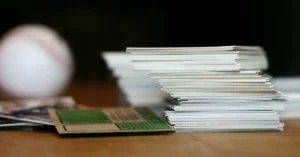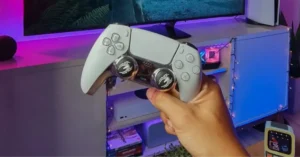Transform your backyard into a basketball haven with my guide on how to build a basketball court. With expert advice on costs, materials, and construction, you’ll be equipped to create your own personal court for endless hoops enjoyment.
Planning Your Basketball Court
Before you break ground on your new home basketball court, it’s crucial to nail down the design details. Adequate planning ensures that your court not only fits your space and needs but also meets any legal requirements and stays within your budget.
Determine Court Size and Location
To start, measure your available space to decide whether to go for a full-sized or half-court court. Full courts are typically 94 feet by 50 feet, while half-courts can be 47 feet by 50 feet or smaller. The location should be flat to avoid high costs of leveling the ground. Accessibility and proximity to other structures are essential to consider, as is ensuring the area has no underground utilities that could interfere with construction.
Obtain Necessary Permits
Before construction, check local zoning laws and obtain any required permits. This step is crucial as regulations can dictate the size and placement of your backyard basketball court. Some areas may require a setback from property lines or limit the height of any lights or fencing.
Design and Layout Customization
When designing, you have various choices that can reflect your preferences. Use an online tool to select your court’s game lines, colors, and accessories. Whether you prefer basketball or multiple sports, ensure the court dimensions accommodate all desired uses.
Budgeting and Cost Estimation
Finally, draw up a comprehensive budget. Costs include materials like asphalt or concrete, hoops, and line painting. Remember to factor in the expenses for permits, professional labor if you’re not DIYing, and long-term maintenance. Be realistic and account for potential overruns to avoid surprises.
Keep these steps in mind as you create your dream basketball court – from conceptualization to the final buzzer, your upfront planning pays off in a personalized space for sports and fun.
Materials and Tools Required

Before you start building your basketball court, having all the necessary materials and tools is essential. This will ensure a smooth construction process and a high-quality final product you can enjoy for years.
Choosing the Right Surface Materials
The surface material of your basketball court will significantly impact its playability and longevity. Asphalt is a durable and cost-effective option, often used for outdoor courts. However, concrete is the recommended material due to its long lifespan. You might consider modular tiles for a more professional feel, which can provide excellent traction and shock absorption.
Selecting Basketball Hoops and Accessories
Your basketball hoop is a central feature of the court. There are various hoops to choose from, whether in-ground or portable, so select one that suits your playing style and court setting. Don’t forget to include accessories like nettings, and ensure they are compatible with your selected hoop system.
Gathering Tools and Equipment
To construct your court, you’ll need a set of specific tools and equipment. Start with basics like shovels, wheelbarrows, and tape measures for groundwork.
For the surface, you’ll require tools for smoothing concrete, like trowels, or equipment for laying modular tiles, which may include rubber mallets and cutting tools. Remember, the right tools make the job easier and safer.
Preparation of the Site

Before laying down the foundation of your basketball court, you need to ensure the ground is evenly leveled and adequately prepared for optimal drainage and stability. This preparation is crucial to create a long-lasting sports area that won’t succumb to weather or wear.
Levelling and Grading the Ground
To start, level the ground where your court will be. Clear debris and use a land grading technique to create a flat surface. This may involve removing excess soil or adding fill to low areas. The surface must be even to prevent water pooling and to ensure player safety.
Managing Drainage and Slope
Consider the slope of your future court to manage drainage effectively. A slope of 1% to 2% will help prevent water buildup on the playing surface. Proper drainage keeps the court dry and playable, reducing the risk of injury and the deterioration of the court material.
Handling Vegetation and Landscaping
Remove all vegetation to prevent roots and weeds from disrupting the surface. If you plan to incorporate landscaping around the court, do so in a way that helps with water drainage away from the playing area. When laying the court foundation, rebar reinforcement in your concrete can help prevent cracking, adding stability and longevity to your surface.
Constructing the Court Base

Creating a solid and level base for your basketball court is crucial for its longevity and playability. You’ll start by laying a strong foundation, whether it’s concrete or asphalt, which will need reinforcement for stability and to prevent cracking over time.
Pouring the Concrete Slab or Asphalt
For a long-lasting basketball court, pour a concrete slab or lay an asphalt surface as the base. Make sure the ground is wholly leveled before you start. On a well-compacted and stable ground lay a 4-inch thick layer of concrete. If you opt for asphalt, ensure it’s also leveled with a minimal slope for water drainage. Both surfaces should be smooth for optimal play.
Installing Rebar and Anchor Systems
Installing rebar is a must to reinforce the concrete slab and support any basketball hoops or systems. Place the rebar in a grid pattern to add strength to the concrete base and minimize the risk of cracking under the pressure of gameplay. Along with rebar, embed anchor systems within the concrete to secure basketball hoops firmly to the ground.
Setting up Court Boundaries
With the base in place, it’s time to define your court’s playing area. For accurate court construction, mark the court boundaries using measuring tape and chalk lines for precision. You can install permanent markers or use a darkened outline on the surface itself to maintain clear lines. Remember to measure twice to ensure accuracy; after all, this will determine the play area of your basketball court.
Surface and Painting Works

Creating the perfect basketball court involves carefully preparing and applying specific materials designed to maintain longevity and performance. You’ll be working with resilient coatings and paints that look great, ensuring your court stands the test of time and use.
Applying Acrylic or Other Surface Coatings
Before applying any coating, ensure your concrete base is fully cured and clean. Using a high-quality acrylic coating will provide durability and excellent ball response for an optimal playing surface. It’s crucial to apply the coating evenly across the entire court surface to prevent any inconsistencies in the ball’s bounce.
Painting Court Lines and Markings
Once your acrylic coating is down, it’s time to focus on precision. To paint court lines and markings, you must use stencils for accuracy. The most critical lines, like the free throw lane and three-point line, must be measured and marked correctly. Tape your stencils and use an appropriate paint roller or sprayer to ensure sharp, well-defined lines.
Adding Color and Aesthetics
For the finishing touches, adding color to your basketball court boosts aesthetics and provides a safer, more engaging playing environment. When selecting paints, choose formulas designed for outdoor sports surfaces to resist fading and weathering. Feel free to get creative with colors outside the lines to give your court a personal touch, maintaining a clear distinction between play areas and surrounding surfaces.
Court Accessories and Features

Completing your basketball court with the right accessories and features enhances playability and transforms the space into a central hub for family and community. Pay attention to these components to maximize the enjoyment and functionality of your court.
Installing the Basketball Hoop System
Basketball Hoop: The centerpiece of any court is your basketball hoop system. Selecting a durable hoop that can withstand both the environment and vigorous play is crucial. When installing, dig a deep hole for the pole and secure it with concrete. This ensures stability and safety. For a detailed guide, check out Everything You Need for a DIY Basketball Court, which discusses installation and the concrete setting process.
Setting Up Outdoor Lighting
Outdoor Lighting: Extend your playtime with proper outdoor lighting. Install lights at strategic points, ensuring they are high enough to not be in direct line of sight and cause glare. Choose energy-efficient LED lights to minimize ongoing costs.
Adding Benches and Landscaping Features
Benches and Landscaping: Beyond the game, comfort is key. Include benches on the sidelines for rest periods and to accommodate spectators. Consider the landscape around your court; add plants or shrubs to create an inviting atmosphere. It’s not just about the basketball hoop; the environment around your court significantly impacts the overall experience.
Maintenance and Upkeep
Cleaning the Court
Regularly clean your basketball court to prevent dirt and debris from affecting play and causing unnecessary wear. Sweep the surface weekly with a push broom to remove leaves, twigs, and dirt. For more thorough cleaning, especially of stubborn stains or spills, use a mild detergent with water and a scrub brush, then rinse with water and allow it to dry completely.
Seasonal Weather Protection
To safeguard the playing surface from seasonal weather changes, take preemptive action. Remove snow and ice promptly in winter, using plastic shovels to avoid scratching the court. During the rainy season, ensure proper drainage around the court to prevent water accumulation; if you notice puddles, address leveling issues promptly to avoid damage.
Repair and Resurface Guidelines
Inspect your court annually for cracks or other signs of wear. Minor issues can become more significant problems if left untreated. For minor cracks, use an acrylic crack filler compatible with the surface. A professional should do a complete resurfacing every 4 to 5 years to maintain a safe and high-performance playing area.
DIY Tips and Resources
Building your basketball court can be a rewarding project. Remember, precision and planning are your best allies in this DIY endeavor. Consider all aspects like location, size, and materials before diving in. Below are some tips and resources that will aid you in creating your court.
Using Court Builder Kits and Services
Pros: Court builder kits simplify the process. They often include everything you need, from the installation instructions to the last piece of hardware. For example, a kit might provide a stencil to mark the playing lines accurately.
Cons: Kits can be less flexible in terms of design and dimensions. You’re somewhat limited to the provided options.
Consider companies offering DIY basketball court kits with customizable options and all-inclusive packages. These services often come with expert advice; some even provide a free quote to help you budget.
Following Installation Instructions
Print out or have a digital copy of the installation instructions, ensuring you don’t miss any crucial steps. The instructions should detail the whole process, from laying the foundation to painting the court lines.
Follow them meticulously to avoid common pitfalls. If your kit comes with a stencil, use it to keep court lines straight and professional-looking. Websites like Dominator Hoop’s guide can offer detailed insight into the process.
Finding Professional Help or Contacting Experts
If the project exceeds your expertise, don’t hesitate to contact experts for advice or assistance. Building a court requires specific skills, particularly when dealing with ground-leveling and pouring concrete.
A professional can point out the pros and cons of your specific project. They might save you time and money in the long run. Visit MSF Sports or similar sites to find experts in your area who provide consultations or contact us pages for more direct communication.
FAQ
What is the cheapest way to make a basketball court?
Installing a portable hoop on your driveway is the cheapest way to make a basketball court. If that’s not an option, you can build a small 30’x30′ half-court, which gives you enough space for 3-on-3 streetball.
Is it hard to build a basketball court?
While you may have every inch of your dream court in your mind, it’s best to leave the construction to the pros. Making a DIY court is a lot of work and requires a good deal of equipment. Even if you want to install a basketball court yourself, leaving it to the professionals is best.
How to make a basketball court at home?
Here are the basics:
Mark the corners of your court and check the slope with string and a level.
Remove vegetation and level the ground by adding or removing dirt. …
Set concrete forms and square the corners. …
Add gravel fill to four inches below the top of the forms. …
Pour concrete from one end of the form to the other.
If you enjoyed reading about the topic: how to build a basketball court, leave a comment and stay updated on Pinterest for more exciting basketball news.
Leave me a comment and make sure to also check out NBA All Star Shorts.






